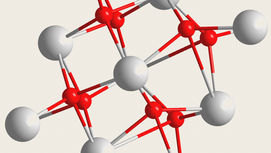Calendar Icon
Jul 12, 2022
![]() RSS
Submit a Story
RSS
Submit a Story

RELATED LINKS
Jeffrey Shield, department chair and Robert W. Brightfelt Professor of Mechanical and Materials Engineering, is among a team of University of Nebraska-Lincoln materials researchers who have shown that larger grains of hafnium oxide produce higher-quality, more relaiable ferroelectricity, contrary to long-held notions about the material. Their study was recently published in the journal New Materials.
Submit a Story